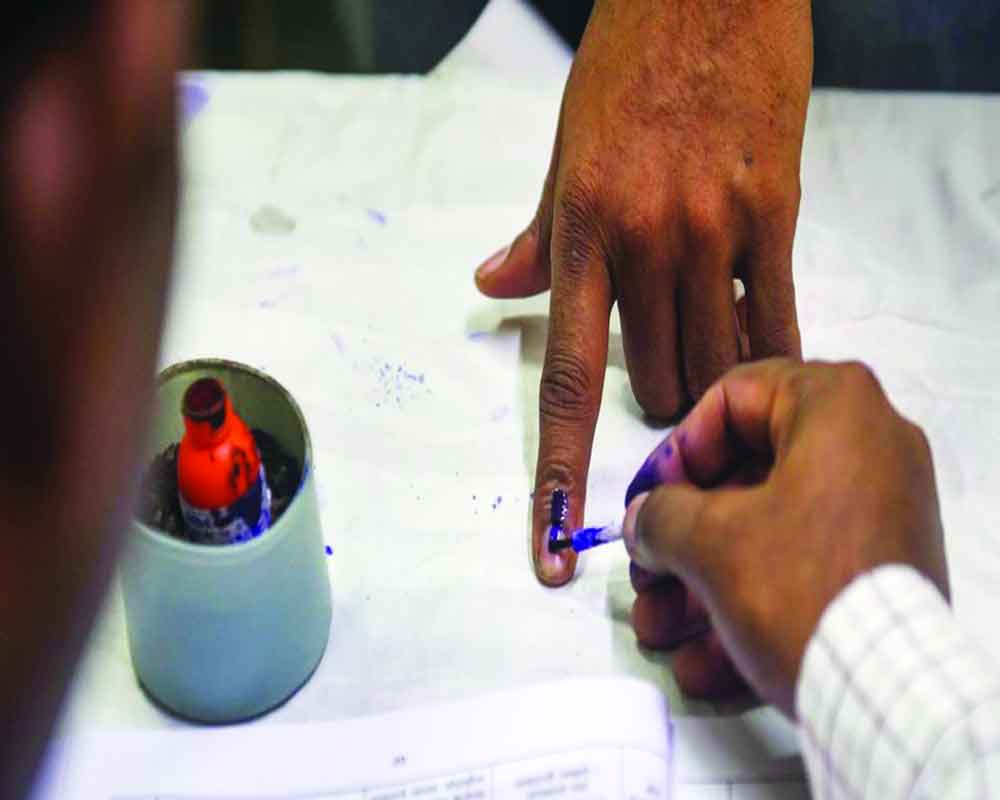Will AAP be able to retain its novelty factor? Does the BJP need to reinvent its campaign pitch?
Now that the Delhi elections have been announced, coming as they do bang in the middle of a student-led churning in India against the status quo of habit in politics, the focus is on the Aam Aadmi Party (AAP). This is its litmus test as it did stir up the political process when its leaders began the transformation story with “India Against Corruption,” drew in civil society and students, attempted a pan-India blitz, even nudged in an alternative narrative but failed to make a big splash nationally. But it still got Delhi and learnt tough lessons from its missteps — being deserted by its acolytes with higher ambitions, repeating the mistakes of the Indian politician’s playbook, blaming the Centre for vindictive power plays, even earning the ire of voters who thought that they had been short-changed. Yet AAP won the war of perception by delivering the toughest part of governance. That’s performance. This is its only credo and novelty. This election will prove whether that can be pro-incumbency in a highly polarised context. There can be no doubt that it has shown incremental success in converting the old rhetoric of bijli, sadak and paani of its predecessors into the Delhiite’s new aspiration. Power reforms were the reason the Congress, then led by Sheila Dikshit, got mass acceptability between 1998 and 2013. The focus was on improving the quality of power supply through privatisation of the electricity distribution sector. And when that frayed at the edges, the mess was a fertile ground for the AAP to emerge as a champion of people’s right to a good life. It questioned the privatisation model, alleging financial irregularities by distribution companies to inflate tariffs at public expense. The reduced power bills will top AAP’s performance sheet. Or free water within consumption limits. It has set the nation’s agenda in education reforms by allocating 26 per cent of the Budget to education, upgrading standards and performance of Government schools and introducing the “happiness curriculum.” The mohalla clinics have revolutionised health delivery modules, the night shelters have eased the woes of the homeless and doorstep delivery of services have endured with the citizenry. And while the Urban Development Ministry has now approved regularisation of unauthorised colonies, the AAP Government has to be credited for making it inevitable by upgrading their infrastructure. Of course, it has been socialist to consolidate its votebank but it has already talked about decongesting and redesigning road infrastructure and launched free wi-fi to appeal to urban sensibilities. Some PWD projects are almost complete. Many observers had thought that the tidal personality cult of Narendra Modi in the Lok Sabha elections last May, which swamped every Opposition leader, including Chief Minister Arvind Kejriwal, and pushed back AAP to third place in voting percentage, would be the end. But Kejriwal was quick to seize the trade winds, stopped blame games or even talking about Modi and steered clear of lambasting Hindutva. Instead, he’s been seeking votes on the basis of his performance, asking people not to vote if they don’t like his work and emphasising he was only concerned about Delhi and not the nation. This self-deprecatory and localised, neighbourhood approach has foxed the BJP.
Lack of State leadership is the BJP’s Achilles’ heel, besieged as it is with faction fights. It suddenly finds itself without a credible counter-narrative on deliverables as it has predictably pitched its campaign on Modi’s personality and its hyper-nationalist agenda. With Kejriwal choosing not to fall for the BJP’s tested provocation on the Citizenship Amendment Act (CAA) and the students’ protests, the lofty vision of a Ramrajya would fall flat without an alternative Delhi development plan. In fact, the BJP’s aggressive adversarial pitch and “everybody hates Modi” plan have fallen flat with Kejriwal choosing to disengage from any area that crosses paths with the Centre, even full Statehood and police, and sticking to his territorial limits. The problem is the BJP has misread Delhi as a barometer of the national pulse without realising that its people are the most vote-conscious, their loyalty pledged only to whoever has the better Excel sheet. That’s why its candidate Kiran Bedi lost to Kejriwal in 2015 despite the break-up between the Congress and AAP. Besides, AAP has cultivated caste/regional groups like Purvanchalis, Jats and Uttarakhandis and women, something that both the BJP and the Congress haven’t been able to harmonise. The Congress has lost the gameplan after Dikshit’s death and may not even be a vote-cutter but push the elections to a bipolar duel. February 11 will tell us what won hearts in the end.
(Courtesy: The Pioneer)








 OpinionExpress.In
OpinionExpress.In















Comments (0)